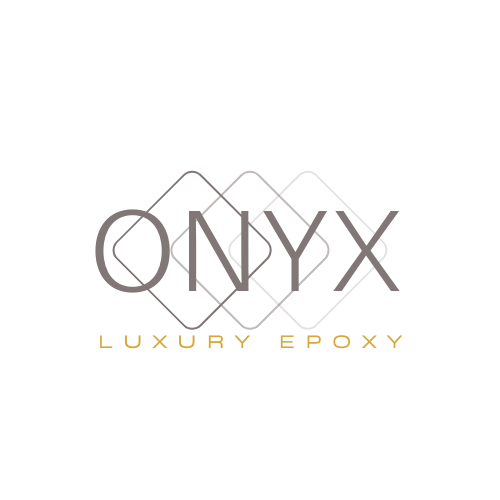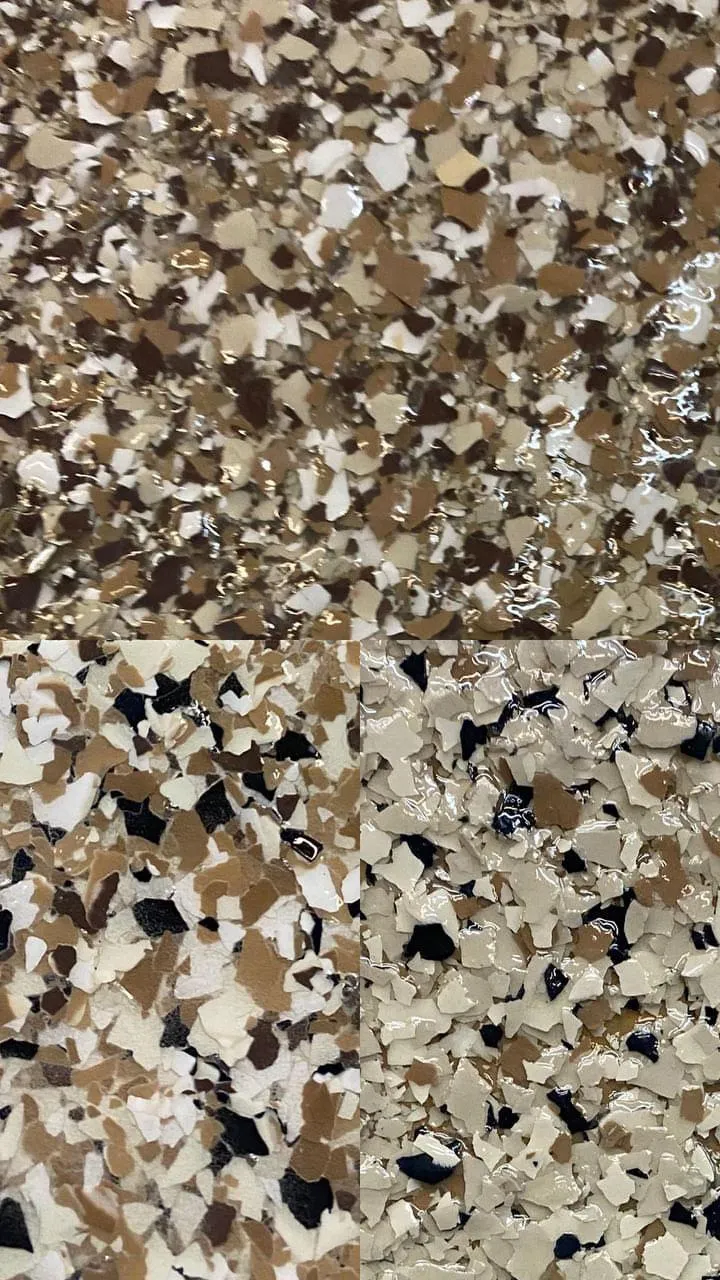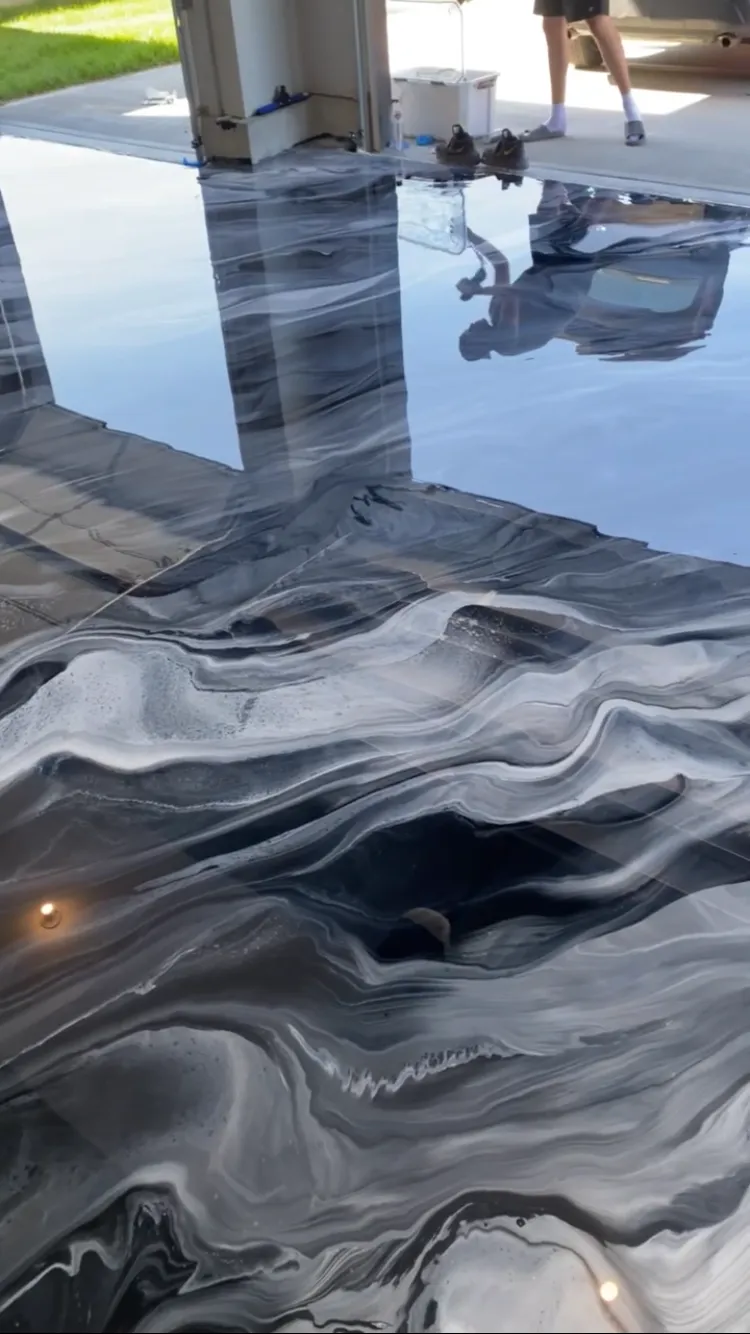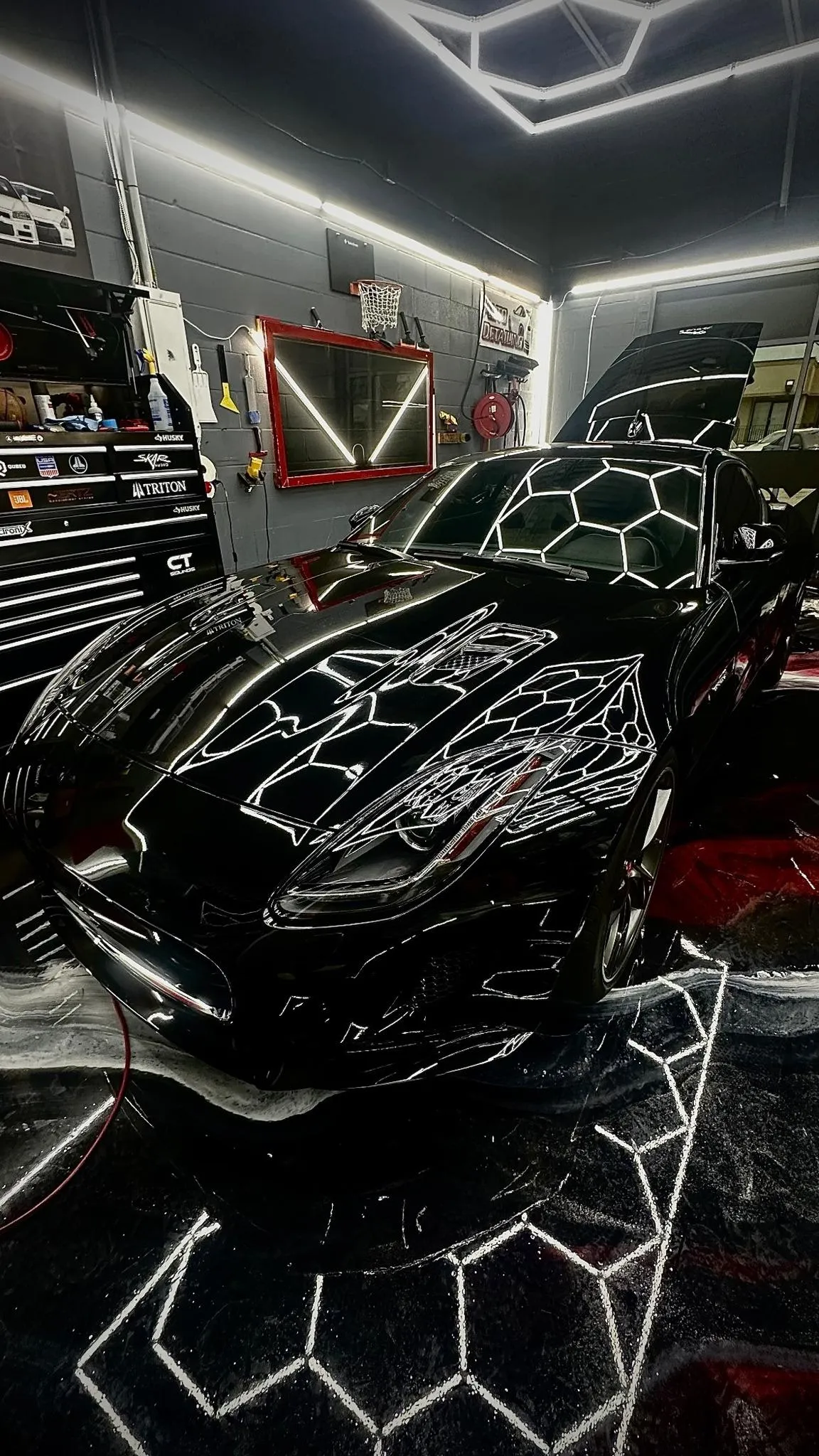
Comprehensive Glossary of Epoxy Flooring Terminology
Epoxy flooring is a popular choice for both commercial and residential spaces due to its durability, aesthetic appeal, and versatility. However, the technical terms associated with epoxy flooring can be confusing for those not familiar with the industry. This comprehensive glossary aims to demystify the terminology, providing clear definitions and explanations for a wide range of terms related to epoxy flooring. Whether you're a contractor, a DIY enthusiast, or a homeowner considering epoxy flooring for your space, understanding these terms will help you make informed decisions and ensure successful project outcomes.
Preparation and Application
Abrasion Resistance: The ability of the epoxy floor to resist wear caused by friction or rubbing. This is crucial for high-traffic areas where the floor is subject to constant movement.
Adhesion Promoter: A substance applied to the substrate to enhance the bond between the epoxy coating and the surface, ensuring long-lasting adhesion and preventing peeling or delamination.
Base Coat: The initial layer of epoxy applied directly onto the prepared substrate, serving as the foundation for subsequent layers. It provides the primary adhesion and builds the thickness of the coating system.
Broadcast Method: A technique where aggregate materials, such as sand or decorative flakes, are sprinkled onto wet epoxy to add texture or visual interest. This method is often used to create slip-resistant surfaces or enhance the aesthetic appeal of the floor.
Concrete Primer: A preparatory coating applied to concrete surfaces to improve adhesion and ensure the epoxy adheres properly. Priming is essential to seal the concrete pores and create a suitable surface profile for the epoxy.
Curing Time: The duration required for the epoxy to fully harden and reach its optimal properties. Proper curing is vital for the floor's durability and performance.
Filler: Materials like silica or powders added to epoxy resin to enhance specific properties, such as strength or viscosity. Fillers can also be used to repair minor imperfections in the substrate before applying the epoxy.
Grout Coat: A thin layer of epoxy used to fill gaps or joints in the substrate before the main coating is applied. This ensures a smooth and uniform surface for the topcoat.
Levelling Compound: A compound used to create a smooth and even surface on the substrate before applying the epoxy coating. It helps in leveling uneven floors and filling low spots.
Outgassing: The release of trapped air or moisture from the concrete during the curing process, which can cause bubbles in the epoxy coating. Proper surface preparation and controlled application conditions are essential to minimize outgassing.
Recoat Window: The optimal time period during which an additional coat of epoxy can be applied without requiring extra surface preparation. This ensures proper bonding between coats.
Substrate Preparation: The process of cleaning, repairing, and priming the concrete surface to ensure proper adhesion of the epoxy coating. This may include mechanical grinding, shot blasting, or acid etching.
Surface Preparation: Steps taken to clean and ready the surface, including removing contaminants and creating a suitable profile for epoxy application. Proper preparation is crucial for the longevity and performance of the epoxy floor.
Trowel-Grade Epoxy: A thick, heavy-duty epoxy applied with a trowel, often used for repairing or leveling surfaces. It is ideal for areas that require a durable and high-build coating.
Properties and Performance
Elasticity: The ability of epoxy to flex and return to its original shape without cracking or breaking. This property is important for floors that may experience slight movements or temperature fluctuations.
Epoxy Mortar: A highly durable mixture of epoxy resin and aggregate used for repairing and leveling damaged or uneven concrete surfaces. It is often used in industrial settings for its strength and durability.
Hydrostatic Pressure: The pressure exerted by water within the concrete slab, which can affect the adhesion and performance of the epoxy coating. Moisture mitigation systems may be required in areas with high hydrostatic pressure.
Impact Resistance: The capability of the epoxy floor to withstand sudden and forceful impacts without damage. This property is essential for areas subject to heavy loads or dropping objects.
Moisture Vapor Transmission (MVT): The movement of moisture through concrete, which can impact the performance of epoxy coatings. High MVT can cause delamination or blistering if not properly addressed.
Thermal Shock Resistance: The ability of the epoxy floor to endure rapid temperature changes without cracking or degrading. This is important in environments with fluctuating temperatures or thermal cycling.
UV Stability: The resistance of epoxy coatings to discoloration or degradation when exposed to ultraviolet light. UV-stable epoxy is essential for outdoor applications or areas with significant sunlight exposure.
Viscosity: The thickness or flow characteristics of the epoxy resin, affecting how it spreads and levels. Proper viscosity ensures smooth application and adequate coverage.
Wear Layer: The topmost layer of epoxy designed to withstand the most wear and tear, ensuring durability. This layer protects the underlying epoxy and maintains the floor's appearance.
Chemical Resistance: The ability of the epoxy floor to withstand exposure to various chemicals without degrading. Chemical-resistant epoxy is essential in industrial settings where spills and chemical exposure are common.
Shear Strength: The capacity of the epoxy to resist forces that can cause layers to slide against each other, preventing delamination. High shear strength is crucial for maintaining the integrity of the coating system.
Types and Techniques
Aggregate: Granular materials like sand, gravel, or crushed stone mixed into epoxy for added strength and texture. Aggregates enhance the mechanical properties of the epoxy and can create slip-resistant surfaces.
Non-Slip Aggregate: Special granules added to epoxy to create a slip-resistant surface, enhancing safety. Non-slip aggregates are often used in areas prone to wet conditions or heavy foot traffic.
Epoxy Flake Flooring: Epoxy floors incorporating decorative flakes to add color, texture, and a unique appearance. This type of flooring is popular for its aesthetic appeal and customization options.
Metallic Epoxy: Epoxy mixed with metallic pigments to create a shiny, reflective, and decorative finish. Metallic epoxy floors are known for their unique and luxurious appearance.
Self-Leveling Epoxy: A type of epoxy that spreads out evenly, creating a smooth and level surface without the need for extensive manual spreading. It is ideal for creating seamless and uniform floors.
Polyurethane Topcoat: A protective layer applied over epoxy to enhance durability, UV resistance, and chemical resistance. Polyurethane topcoats extend the life of the epoxy floor and improve its performance.
Epoxy Injection: A method used to repair structural cracks in concrete by injecting epoxy resin into the cracks. This technique restores the structural integrity of the concrete and prevents further damage.
Epoxy Patch: A repair compound used to fill holes or cracks in concrete before applying the main epoxy coating. Epoxy patches ensure a smooth and even substrate for the coating system.
Anti-Slip Coating: A coating applied to epoxy floors to improve slip resistance and prevent accidents. Anti-slip coatings are essential for safety in both commercial and residential settings.
Installation and Maintenance
Epoxy Installation: The process of applying epoxy floor coatings, including surface preparation, mixing, application, and curing. Proper installation ensures the longevity and performance of the epoxy floor.
DIY Epoxy Flooring: Step-by-step instructions and methods for homeowners to install epoxy flooring on their own. DIY kits are available for those looking to undertake the project without professional help.
Epoxy Floor Repair: Techniques and materials used to fix cracks, chips, or other damage in existing epoxy floors. Regular maintenance and timely repairs extend the life of the floor.
Epoxy Floor Maintenance: Best practices for cleaning and maintaining epoxy floors to ensure longevity and performance. Maintenance includes regular cleaning, addressing spills promptly, and avoiding abrasive cleaning methods.
Concrete Sealer: A product applied to concrete surfaces to seal pores and improve adhesion before epoxy application. Concrete sealers prevent moisture intrusion and enhance the bond between the concrete and epoxy.
Epoxy Over Existing Flooring: The process of applying epoxy coatings over old or existing flooring materials. This approach can refresh and rejuvenate worn-out floors without the need for complete removal.
Epoxy Floor Resurfacing: The process of renewing an existing epoxy floor by applying a new layer of epoxy. Resurfacing can restore the appearance and performance of the floor.
Epoxy Safety: Safety precautions and measures to take when installing or maintaining epoxy floors. This includes wearing protective gear, ensuring proper ventilation, and following manufacturer guidelines.
Pot Life: The period during which mixed epoxy remains workable and can be applied before it begins to harden. Knowing the pot life is crucial for ensuring timely and effective application.
Tack-Free Time: The time it takes for the epoxy surface to become non-sticky and safe to touch during curing. Understanding tack-free time helps in planning the application schedule and avoiding surface contamination.
Special Considerations and Additives
Blistering: The formation of bubbles or blisters in the epoxy coating due to trapped air or moisture during the curing process. Blistering can compromise the integrity and appearance of the floor.
Concrete Moisture Testing: Methods used to measure the moisture content of concrete before applying epoxy to ensure proper adhesion. High moisture levels can cause adhesion issues and coating failures.
Delamination: The separation of the epoxy coating from the substrate, often due to poor adhesion or moisture issues. Delamination can lead to premature failure of the coating system.
Epoxy Grout: A type of grout made from epoxy resin, used for tiling and providing superior durability and chemical resistance. Epoxy grout is often used in areas exposed to harsh conditions.
Epoxy Sealant: A sealant made from epoxy resin used to waterproof and protect surfaces. Epoxy sealants provide a durable and long-lasting barrier against moisture and contaminants.
Epoxy Underlayment: A layer applied under the main epoxy coat to provide added strength and leveling. Underlayments are used to address surface imperfections and ensure a smooth finish.
Epoxy Vapor Barrier: A coating applied to prevent moisture vapor from penetrating the epoxy floor. Vapor barriers are essential in areas with high moisture levels to prevent coating failures.
Micro-topping: A thin layer of cement-based material applied over existing concrete to provide a new, smooth surface. Micro-toppings are used to refresh worn-out concrete surfaces before applying epoxy.
Orange Peel: A textured finish on epoxy coatings that resembles the surface of an orange peel. This texture can be desirable for certain aesthetic or functional purposes.
Peel Strength: The strength required to peel the epoxy coating from its substrate, indicating adhesion quality. High peel strength is a sign of a well-bonded coating.
Resinous Flooring: Flooring systems made from resin materials, including epoxy, polyurethane, and polyaspartic coatings. Resinous flooring offers a range of performance and aesthetic options.
Self-Healing Epoxy: Epoxy that can repair minor scratches and damage on its own through chemical processes. Self-healing properties enhance the longevity and appearance of the floor.
Skid Resistance: The resistance of an epoxy floor to slipping, enhancing safety. Skid-resistant floors are important in areas prone to wet or oily conditions.
UV Resistant Coating: A coating that resists damage and degradation from ultraviolet light exposure. UV-resistant coatings are essential for outdoor applications or areas with significant sunlight exposure.
Commonly Searched Terms
Epoxy Flooring Cost: The cost of installing epoxy flooring, typically measured per square foot. Costs vary based on factors such as the type of epoxy, surface preparation, and installation complexity.
Epoxy Floor Coating: A protective and decorative layer applied to concrete floors to enhance durability and aesthetics. Epoxy coatings are popular for their versatility and performance.
Epoxy vs. Polyurethane: A comparison of the properties, benefits, and uses of epoxy and polyurethane coatings. Understanding the differences helps in selecting the right coating for specific needs.
Garage Epoxy Flooring: Epoxy floor coatings designed specifically for use in garages, offering durability and resistance to automotive fluids. Garage epoxy flooring is popular for its ease of maintenance and longevity.
Epoxy Floor Colors: The various color options available for epoxy flooring, allowing for customization. Color choices can enhance the visual appeal and match the design of the space.
Industrial Epoxy Flooring: Epoxy floors used in industrial settings, known for their durability and resistance to heavy traffic and chemicals. Industrial epoxy flooring is essential for maintaining safety and efficiency in demanding environments.
Epoxy Floor Kits: DIY kits that contain all the materials and instructions needed for homeowners to install epoxy flooring. These kits are convenient for those looking to undertake the project without professional help.
Epoxy Floor Lifespan: The expected duration an epoxy floor will last under normal use conditions. Lifespan depends on factors such as usage, maintenance, and the quality of the epoxy.
Eco-Friendly Epoxy: Environmentally friendly epoxy products that are low in VOCs (volatile organic compounds) and safe for the environment. Eco-friendly options are important for reducing environmental impact and ensuring indoor air quality.
Waterproof Epoxy: Epoxy formulations that provide a waterproof barrier, protecting the substrate from moisture. Waterproof epoxy is essential for areas exposed to water or high humidity.
Clear Epoxy Coating: A transparent epoxy used to create a clear finish over concrete or other surfaces. Clear coatings enhance the natural beauty of the substrate while providing protection.
Epoxy Floor Smell: Odor considerations during and after epoxy installation, often due to VOCs. Proper ventilation and using low-VOC products can minimize odor issues.
Epoxy Floor Thickness: The optimal thickness for different epoxy flooring applications, affecting durability and performance. Thickness varies based on the intended use and load requirements.
Understanding these terms will help you navigate the world of epoxy flooring, whether you're a contractor, a DIY enthusiast, or a homeowner looking to make an informed decision about your flooring needs. Epoxy flooring offers numerous benefits, including durability, aesthetics, and ease of maintenance, making it a popular choice for a wide range of applications. With this glossary, you'll be better equipped to discuss your project with professionals, select the right materials, and ensure a successful installation.



